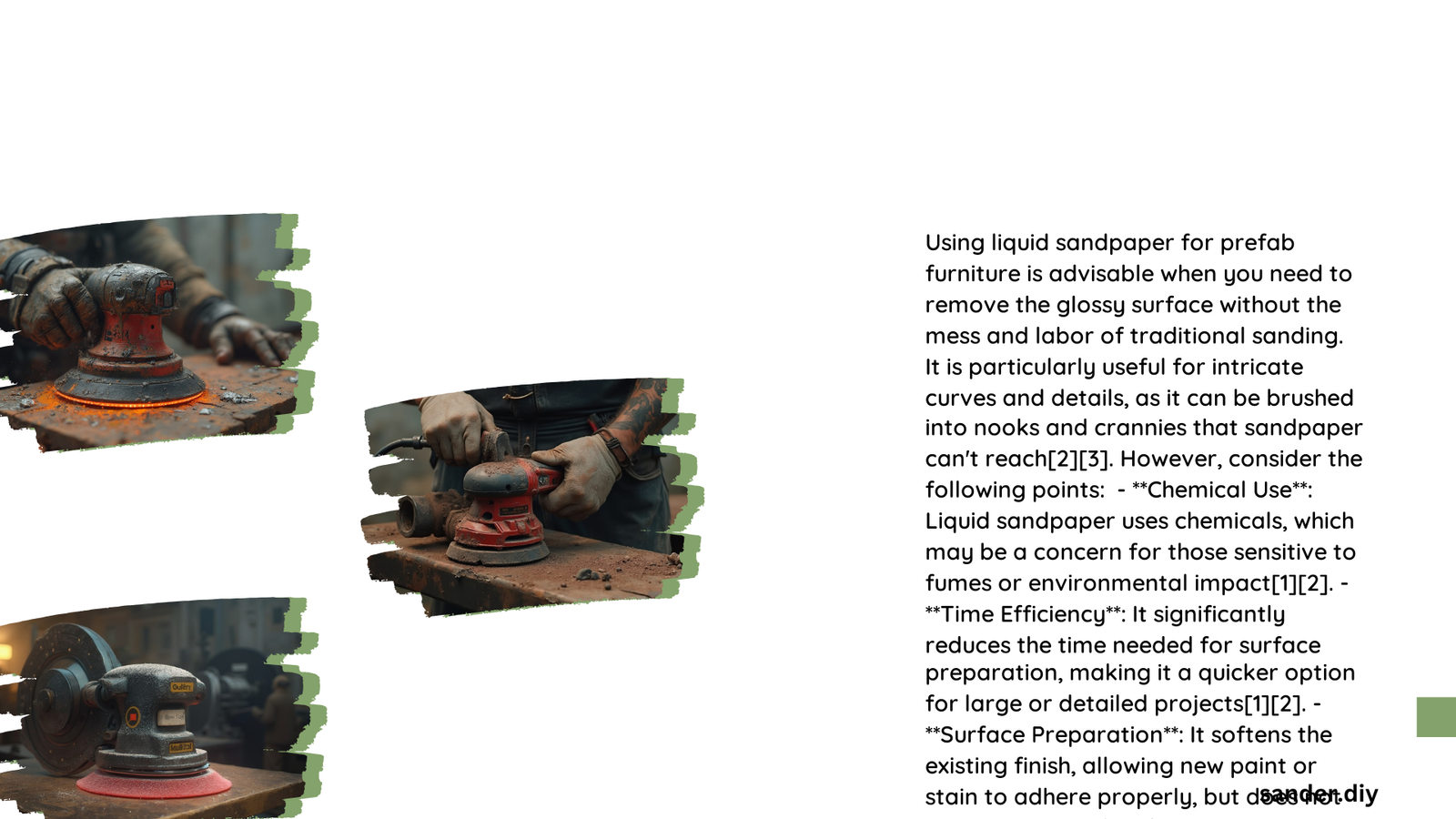Liquid sander offers a revolutionary approach to furniture preparation, providing a quick and dust-free alternative to traditional sanding techniques. Homeowners and DIY enthusiasts often struggle with surface preparation, seeking efficient methods to refinish prefab furniture. This guide explores the critical considerations, benefits, and potential challenges of using liquid sander on prefab furniture, helping you make an informed decision about your next home improvement project.
What Makes Liquid Sander Unique for Prefab Furniture?
Liquid sander represents a game-changing solution for furniture refinishing, offering unique advantages over traditional sanding methods. Unlike conventional sandpaper, this chemical solution softens existing finishes without generating dust or requiring extensive physical effort.
Why Consider Liquid Sander for Surface Preparation?
| Advantage | Traditional Sanding | Liquid Sander |
|---|---|---|
| Time Investment | 1-2 hours | 15-30 minutes |
| Dust Generation | High | Minimal |
| Surface Compatibility | Limited | Wide Range |
| Physical Effort | Significant | Minimal |
Key Benefits of Liquid Sander
- Rapid Surface Preparation: Reduces refinishing time by up to 50%
- Dust-Free Process: Eliminates messy sanding debris
- Versatile Application: Works on multiple surface types
- Gentle Surface Treatment: Minimizes material damage
How Does Liquid Sander Work on Different Furniture Materials?

Liquid sander chemically breaks down existing finishes, creating a slightly roughened surface that promotes better paint or stain adhesion. Its effectiveness varies depending on the furniture material:
- Laminate Furniture
- Excellent for creating paint-ready surfaces
- Prevents surface damage common with traditional sanding
-
Ideal for smooth, non-porous materials
-
Wooden Prefab Furniture
- Works best on sealed or previously painted surfaces
- Less effective on raw, untreated wood
- Recommended for intricate designs and detailed areas
When Should You Avoid Liquid Sander?
- Furniture with deep scratches or significant surface damage
- Raw, unfinished wood surfaces
- Surfaces requiring substantial material removal
- Antique or high-value pieces requiring delicate treatment
What Are the Recommended Application Techniques?
Preparation Steps:
1. Clean the surface thoroughly with degreasing solution
2. Wear protective gloves and work in ventilated area
3. Apply liquid sander using lint-free cloth
4. Allow recommended dwell time (typically 7-10 minutes)
5. Wipe surface clean with fresh cloth
Pro Tips for Successful Liquid Sander Application
- Test on small, inconspicuous area first
- Use high-quality liquid sander products
- Follow manufacturer’s specific instructions
- Ensure proper ventilation during application
- Allow adequate drying time before painting
Top Recommended Liquid Sander Products
- Klean Strip Liquid Sandpaper
- Affordable ($8-$12)
- Excellent for most prefab furniture
-
Quick-acting formula
-
Minwax Deglosser
- Professional-grade performance
- Works on multiple surface types
- Slightly higher price point
Final Considerations
Liquid sander offers a convenient, efficient alternative to traditional sanding for prefab furniture. While not universally applicable, it provides significant advantages for many refinishing projects.
Recommended Use Cases:
– Smooth, sealed surfaces
– Intricate furniture designs
– Quick refinishing projects
– Minimal surface preparation needed
Not Recommended For:
– Heavily damaged surfaces
– Raw wood
– Extensive material removal
References:
– The Spruce – Liquid Sander Guide
– Family Handyman – Refinishing Techniques
– Popular Woodworking – Surface Preparation
